Past Projects Completed Through the Leadership in Community Resilience Grant Program
Through the Leadership in Community Resilience (LCR) grant program, NLC and its partners have provided support to over 30 cities across the country on topics ranging from emergency preparedness to stormwater management.
Click on a city photo below to learn more about each project and how NLC helped cities improve their communities through the LCR grant program.
Meet the 2021 Cohort
Eight new cites were selected to participate in the 2021 LCR grant program. Learn more about their challenges and proposed projects.
Anchorage, AK
On November 30, 2018, Anchorage, Alaska, and the surrounding region were rocked by a magnitude 7.0 earthquake. Although the municipality had a robust response and recovery plan in place, the shock served as an opportunity for city officials to identify gaps in their disaster preparedness strategies. This citywide evaluation revealed the need for improvements in public information and communication, particularly with respect to newcomers and residents from the city’s wide variety of linguistic and cultural backgrounds.
Anchorage is one of the most linguistically and culturally diverse municipalities, with over 100 immigrant, refugee and Alaska Native communities represented. To ensure that new and existing residents with limited English proficiency (LEP) are prepared for future shocks and emergency events, the municipality is applying a locally-developed, successful “peer language navigator” model to improve earthquake and climate preparedness.
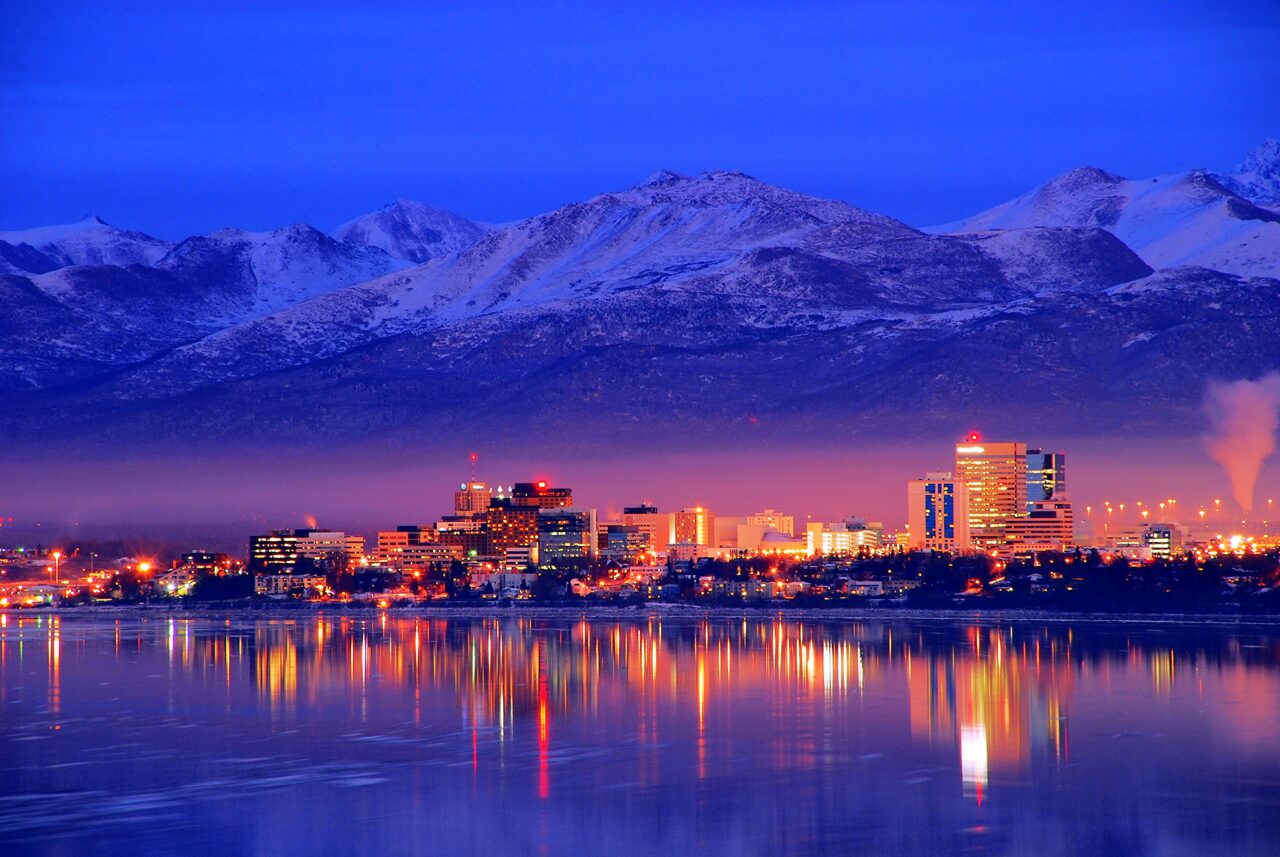
Through a series of workshops and training sessions designed to develop stronger communication systems and practices with LEP communities, the municipality hopes to engage with immigrant and refugee residents in a culturally relevant manner that empowers these individuals and families in emergency situations.
With NLC’s support, Anchorage aims to include local entrepreneurs and other well-networked community leaders in the disaster and climate resilience conversation. These leaders and business owners can serve as valuable nodes in their respective communities and networks, reaching LEP residents more easily and quickly in the event of an emergency. With a rise in extreme heat events, wildfires, coastal flooding and the ever-present possibility of earthquakes, Anchorage is eager to establish effective communication strategies between the municipality and all its diverse communities so that newcomers and long-time residents alike can be well prepared.
Ann Arbor, MI
While the city of Ann Arbor reaps many benefits from its location in the water-rich state of Michigan, it also faces numerous challenges, including a drastic increase in annual precipitation, more flooding events and subsequent economic disruptions and public health impacts. However, compared to other regions of the country that are projected to face devastating droughts, sea level rise, wildfires and other climate impacts, Michigan’s cities will be relatively less affected by these hazards. As such, Ann Arbor is anticipating an increase in population as residents from other regions in the U.S. resettle in less impacted cities. The city is wisely preparing not only for the impacts that climate change will generate, but also for the potential influx of domestic climate migrants who may arrive.
To ensure Ann Arbor is prepared for these climatic and demographic changes, the city will include these variables into its Capital Improvements Plan (CIP), particularly as it plans for upgrades in its water treatment plant and other critical infrastructure. The goal of this work is to fully institutionalize climate change adaptation and population projections into all future city projects.

The Ann Arbor team will work with the National League of Cities to:
- Compile climate projections for any remaining variables such as data on heat waves, seasonal changes, extreme precipitation and extreme temperatures leading up to 2050, 2075 and 2100.
- Work with climate demographers to develop population projections that include growth due to climate migration.
- Train and engage all city staff on how to use the compiled data and projections in their CIP application process, and to understand which additional climate and weather variables the city should be aware of when designing capital projects.
- Educate and engage with community members on the potential impacts of a large population influx and gather input from the public as well as other stakeholders on the city’s plans.
Ultimately, this project will enable Ann Arbor and NLC to create a blueprint for other similarly-sized cities interested in fully integrating both physical climate projections and climate-related demographic changes in their Capital Improvement Programs.
Annapolis, MD
The Leadership in Community Resilience program provided support for Annapolis to finalize its Cultural Resources Hazard Mitigation Plan and evaluate it against a pending downtown economic analysis. Many coastal cities are grappling with the preservation of historic waterfront property and cultural landmarks against the threats posed by climate change and sea-level rise.
The Annapolis plan is a first-of-its kind effort to create a mitigation strategy for these resources utilizing an intensive public participation process. The NLC assistance will be used to support and build upon the public process, while helping to ensure that the plan meets various FEMA criteria.
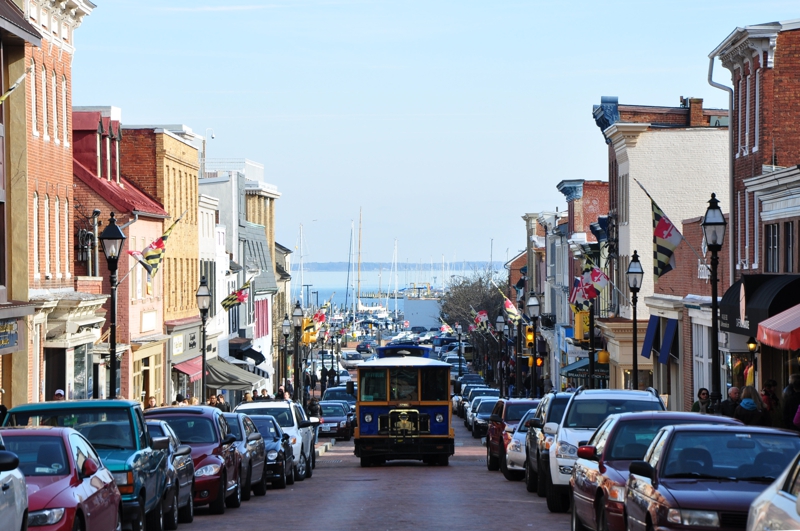
Additionally, the project will support Annapolis as it hosts the second Keeping History Above Water conference and marks the completion of the mitigation plan and involve participation from cities up and down the Atlantic coast.
State of Maryland natural hazards include hurricanes, flooding, tornadoes, and severe winter storms. Social hazards include low median income and concentrated poverty in neighborhoods with greater flood risk. According to the National Climate Assessment, sea level increased 1.2 feet over 100 years (1901-2012). “Sea level rise of two feet, without any changes in storms, would more than triple the frequency of dangerous coastal flooding throughout most of the Northeast.”
Arcata, CA
Situated on the northeastern coast of California, the city of Arcata has been a leader in environmental policy since the 1970s. From the fight to protect Humboldt County’s old growth redwood trees to the city’s revolutionary Marsh & Wildlife Sanctuary—which functions as part of its wastewater treatment system—Arcata is known nation-wide for its strong environmental ethics. However, its coastal, remote location makes Arcata extremely vulnerable to natural disasters. A 2018 sea level rise risk assessment found that the Humboldt Bay region will be more impacted than the rest of the state. Arcata is also prone to earthquakes and even tsunami inundation in certain areas. Additionally, Arcata is also downriver of the Matthews Dam, which, if broken, would flood a significant portion of the community.

In the fall of 2019, Arcata experienced two Public Safety Power Shutoff (PSPS) events due to wildfires, each lasting several days. During each PSPS, essentials such as fuel became scarce and Arcata’s small community was deprioritized for outside goods. These events revealed how the increasing frequency of disasters associated with climate change will test rural, resource-scarce communities. The city has worked to update its Emergency Operations Plan (EOP) for local government operations, including hazard annexes addressing specific risk scenarios. Ensuring that city staff are familiarized with emergency protocols is critical but communicating these risks and preparation measures with the city’s limited-English speaking residents is equally important. With support from NLC, the city of Arcata is updating its CodeRED alert system to include preset messages in Spanish, refreshing the city’s website to include Spanish pages, and engaging with residents at community events to encourage new CodeRED sign-ups. The city will also print and hang a CodeRED banner in the town square to promote emergency preparedness and hopes to distribute emergency kits to residents at community events when it is safe to do so.
Birmingham, AL
The City of Birmingham, under the leadership of Mayor Randall Woodfin, is ready to take the next step towards becoming the most resilient and sustainable city in the South. Presently, Birmingham is involved in the initial development of a comprehensive, community-wide Sustainability Plan which is a key element of the City’s Comprehensive Plan (2013). The overall goal of the Sustainability Plan is to better address the City’s resiliency related challenges by identifying and implementing both policy and practice based opportunities and strategies to: 1) generate better waste management, energy efficiency improvements, and land use conservation and water resources use enhancements; 2) to reduce the unintended adverse impacts of transportation systems, the built environment, and other sources of greenhouse gases on environmental quality and public health; and 3) to enhance social and health equity through employing more sustainable practices and by promoting a greener economy.
With funding and assistance from the Leadership in Community Resilience program, the City will embark on a year-long planning process that includes a comprehensive stakeholder input component to tailor the Sustainability Plan to the City’s specific goals and objectives and secure community endorsement of the outcomes.
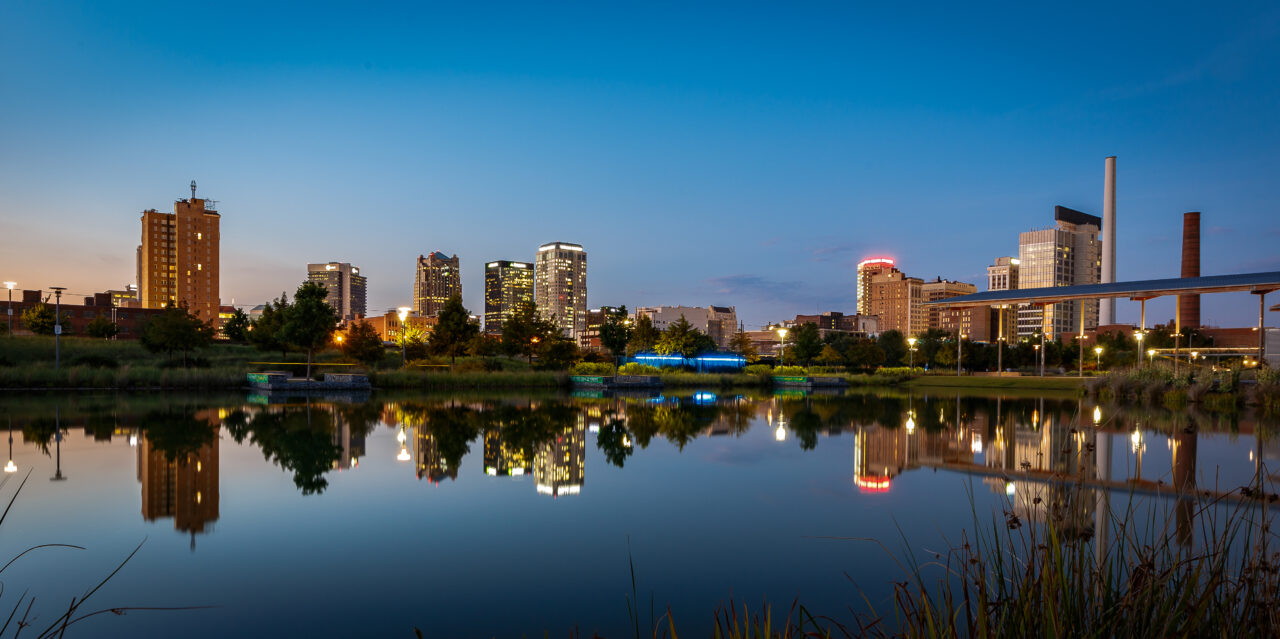
The program will help to coordinate and augment existing partnerships with ICLEI, STAR Communities, Thriving Earth Exchange and Southeast Sustainability Directors Network. The success of this effort will be determined by the breadth of public engagement and the extent to which the resulting plan can focus on clear, implementation-oriented strategies for sustainability and social equity.
Bozeman, MT
Bozeman, Montana is located in the Greater Yellowstone Ecosystem and is the fastest growing micropolitan area in the nation (2016 Census) with 20% population growth since 2012. In addition to the mounting pressures of growth, Bozeman can expect continued warming with precipitation becoming less reliable. In the future, more moisture is expected to arrive as rain instead of snow. Bozeman depends on snowpack for 80% of its water supply–making it vulnerable to drought, wildfire, poor air quality, and economic losses to its thriving tourism and outdoor economies. With the current pace of growth, Bozeman could face a water shortage within 20 years.
In order to stay in front of this potential crisis, the city is undertaking a multi-phase process to 1) build a common language and understanding around resiliency within our organization, 2) bring the concept of resiliency planning to the larger community, and 3) develop a community Resiliency Action Plan.
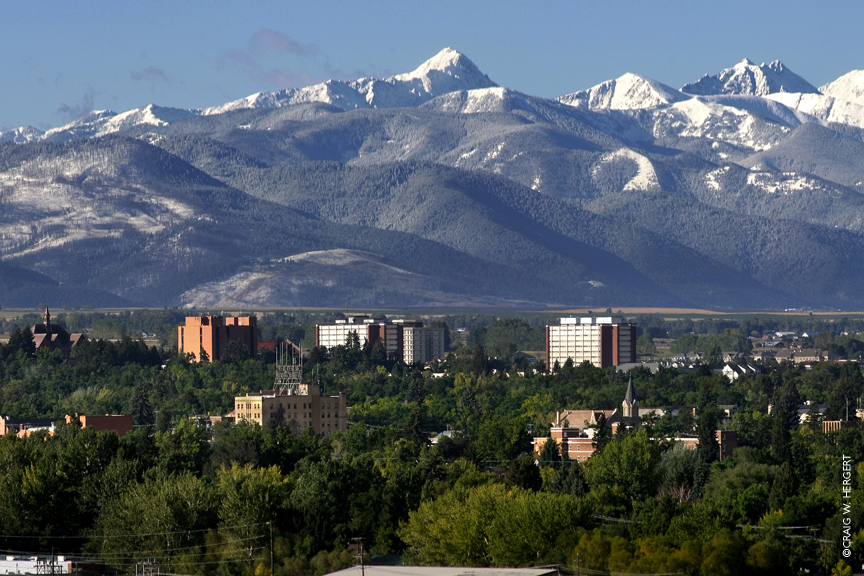
The process is being spearheaded by the mayor Cyndy Andrus and coordinated between the Sustainability Division as well as the Economic Development Division. The first phase is already underway and a City Resilience workshop for over 50 of the city’s senior staff will take place in February in partnership with Arizona State University.
To maintain momentum and advance the city’s second goal of bringing the resiliency conversation to the entire community, the Leadership in Community Resilience Program will facilitate a mayor-led Resiliency Summit to engage with neighboring jurisdictions, federal and state agencies, the utility, businesses, education and health care institutions, as well as non-profits focused on water, energy, growth, and land conservation.
Camuy, PR
Situated on the north shore of the island, Camuy, Puerto Rico is known as “la ciudad romántica”. However, its beauty and tranquility belie the twin dangers the region faces: hurricanes and earthquakes. The city has recently won federal grants to rebuild and improve regional resilience and is focusing its efforts on creating a “community resilience hub” that would serve residents in Camuy and two other neighboring towns.

City officials have identified a recently decommissioned public school as the future site of the community resilience hub. In partnership with NLC and Malu Blazquez, formerly of ReImagina Puerto Rico, the team plans to create a safe space, 100% reliant on renewable energy, where residents from across the region can access emergency preparedness materials, hold community meetings, and engage with city officials on a variety of issues. The site will not only serve as a resilient community hub with back-up power, water, and communication services to support Camuy during emergency management and safety operations, it will also provide educational and social services throughout the year for the community. The team plans to work closely with community organizations and residents to ensure the community resilience hub provides the necessary support pre- and post-disaster.
Cincinnati, OH
Cincinnati is leading the way in emissions reductions and sustainability with its commitment to 100 percent renewable energy by 2035, the largest municipal solar array in the country, and the highest number of green jobs in the country. However, climate impacts such as heat and increased precipitation are already worsening health outcomes and causing economic disruptions for residents, with a disproportionate impact on communities of color. Recognizing that historical urban policies have contributed to this inequity, the city has included broad “keys to equity” in its 2018 Green Cincinnati Plan for each sustainability recommendation listed. The city aims to operationalize strategies that foster more equitable and inclusive programs and practices.

With support from NLC, the Cincinnati team is working to achieve four main objectives. First, the city will deepen existing relationships and develop new partnerships with organizations such as Groundwork Ohio River Valley to co-create an Equity Playbook and implement the Green Cincinnati Plan’s recommendations. Second, the city will operationalize the Equity Playbook to incorporate equity into all city sustainability and resilience programs. Next, the city will expand efforts around sustainability and equitable resilience citywide and across multiple departments. Finally, Cincinnati will elevate the importance of equitable resilience among staff, elected leaders, community leaders, and other stakeholders.
The city’s efforts to protect the most at-risk populations from climate disruptions will benefit all residents and create a more sustainable, resilient, and equitable Cincinnati. Through collaborations with both community and national partners, the team hopes to better understand the factors that increase climate risk in local communities, then develop a framework for implementation that can micro-target solutions in historically underserved communities.
Columbia, MO
The city of Columbia, Missouri, is already experiencing the impacts of climate change, and these changes are projected to intensify over time. Projected future changes in the local climate expected by mid-century include 50 days per year above 95℉, an increase in average annual rainfall, and summer droughts becoming more common. Extreme heat will increase the frequency and severity of poor air quality days and exacerbating favorable storm conditions.
In June 2019, the Columbia City Council unanimously adopted a Climate Action and Adaptation Plan (CAAP) in June 2019 to mitigate the community’s contribution to climate change and adapt to current and future conditions. Implementing the CAAP requires activating cross-departmental staff, funding strategies, and most importantly, engaging community members in all processes and decisions to ensure community-led city initiatives are sustainable in the long-term.
To maximize resident participation and leverage community expertise, the city is working with LCR program partner, Climate Access to design and create an inclusive, empowering climate ambassador program that will focus primarily on historically underserved neighborhoods and communities of color. While climate action and adaptation are the primary focus of the ambassador program, the city hopes that this project will build the foundation for ongoing partnerships with residents and community as well as faith-based organizations on a variety of other topics, including health and resilient local economies.
Denton, TX
Located at the northern edge of the Dallas-Fort Worth Metroplex, Denton bears the brunt of the region’s pollution. From 2014 to 2016, EPA data on air pollution indicated that Denton had the highest levels of ozone in the state of Texas. Ozone is highly problematic to human health and can trigger a variety of issues ranging from bronchitis and emphysema, to asthma. As the Denton and Dallas-Fort Worth Metroplex populations grow and climate impacts intensify, the resulting sprawl, traffic and hotter temperatures may threaten the health of Denton’s residents.
In response to these risks and climate impacts, the city of Denton has been tracking its GHG emissions for the past ten years and conducting annual inventories that demonstrate an overall reduction in per capita emissions.
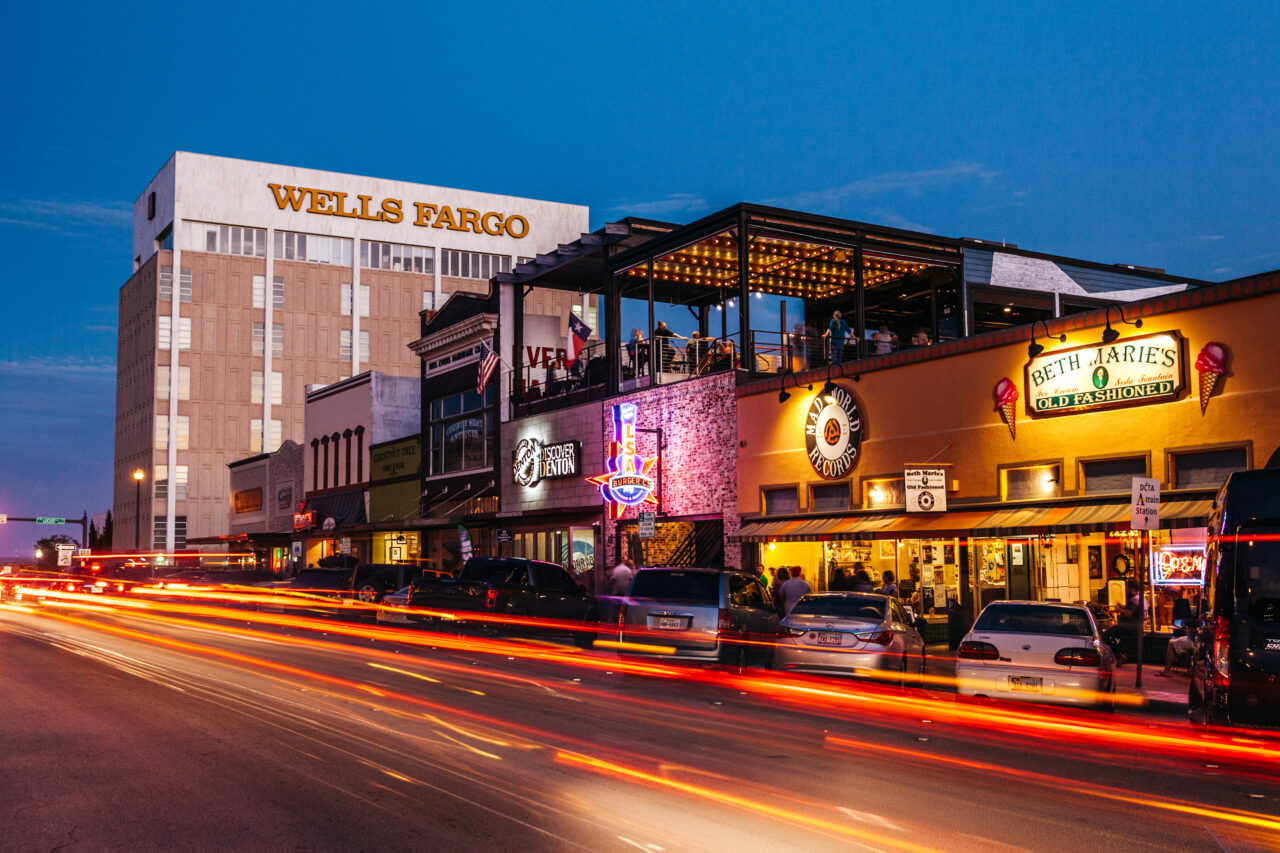
Recently, the city partnered with Local Governments for Sustainability (ICLEI) to complete a GHG Contribution Analysis, and an Assessment of Climate Hazards and Vulnerabilities, with the goal of developing a comprehensive Climate and Air Quality Action Plan. In 2017 and 2018, the city conducted a series of surveys and held three community meetings to engage with the public on climate and sustainability issues, then used this feedback to update the city’s Sustainability Plan.
Feedback gathered from the community indicated that there continues to be widespread support for the city’s climate and sustainability programs, and a desire for even more outreach and information. Since that time, Denton has increased citizen engagement on topics like air quality and water and energy conservation, but the city remains eager to include historically underrepresented communities in these ongoing conversations.
With NLC’s support, the city of Denton will hold a series of engagement events to inform and activate residents on local resiliency issues, and likewise, solicit feedback from all of its diverse communities on the Climate Action Plan; leverage its relationship with local universities and student bodies; and use the input gathered from residents and other stakeholders to shape the city’s future climate policies.
Des Moines, IA
The City of Des Moines is focused on building trust and strengthening relationships with communities in low-income and underrepresented areas that are most susceptible to incurring impacts from climate change. The Leadership in Community Resilience program partnered with a local sustainability expert worked to help organize an engaging community workshop while pursuing re-certification with the STAR community rating system.
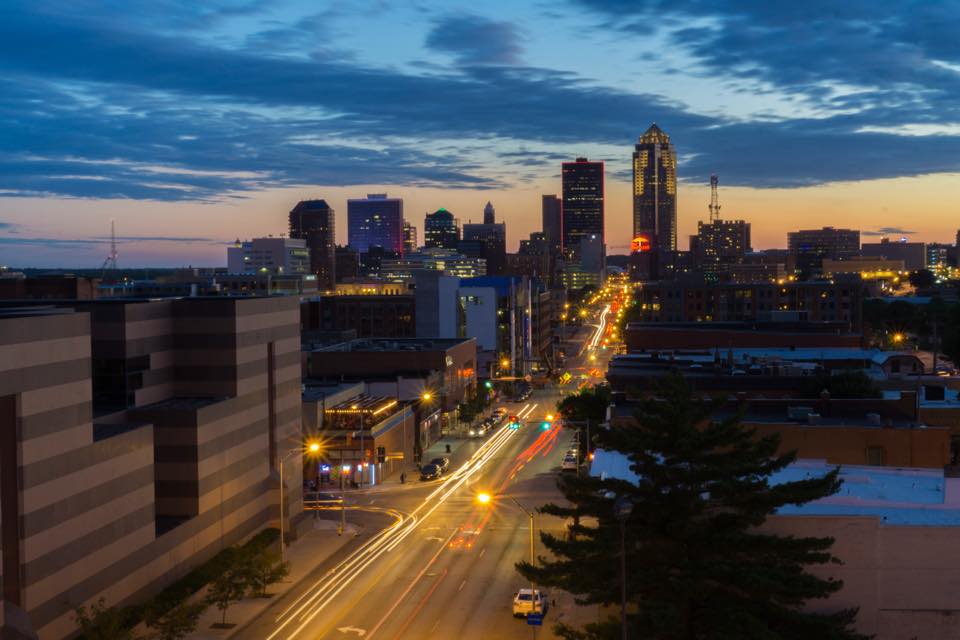
Green Des Moines and the Citizens Advisory Council led the effort by paying particular attention to the “Climate and Energy” and “Equity Engagement” topic areas within the STAR rating, and an inclusive project will be designed to engage low-income and underrepresented communities.
The project will leverage ideas, educational resources and relationships to broaden communication on community resilience and bring the city into stages of action and implementation.
State of Iowa incurs heavy rains and flooding, tornadoes and high winds, ice storms and blizzards. According to the National Climate Assessment. Average regional temperatures have increased by 1.5 F in the past five decades with the largest increases in the Midwest and Northeast. Additional changes to the climate “will tend to amplify existing risks climate poses to people, ecosystems, and infrastructure. Direct effects will include increased heat stress, flooding, drought, and late spring freezes.”
Durango, CO
The climate of Southwest Colorado is changing. Average temperatures have already risen by 2F since 1977 and projections are for an additional 1.5 to 3.5F by 2050.
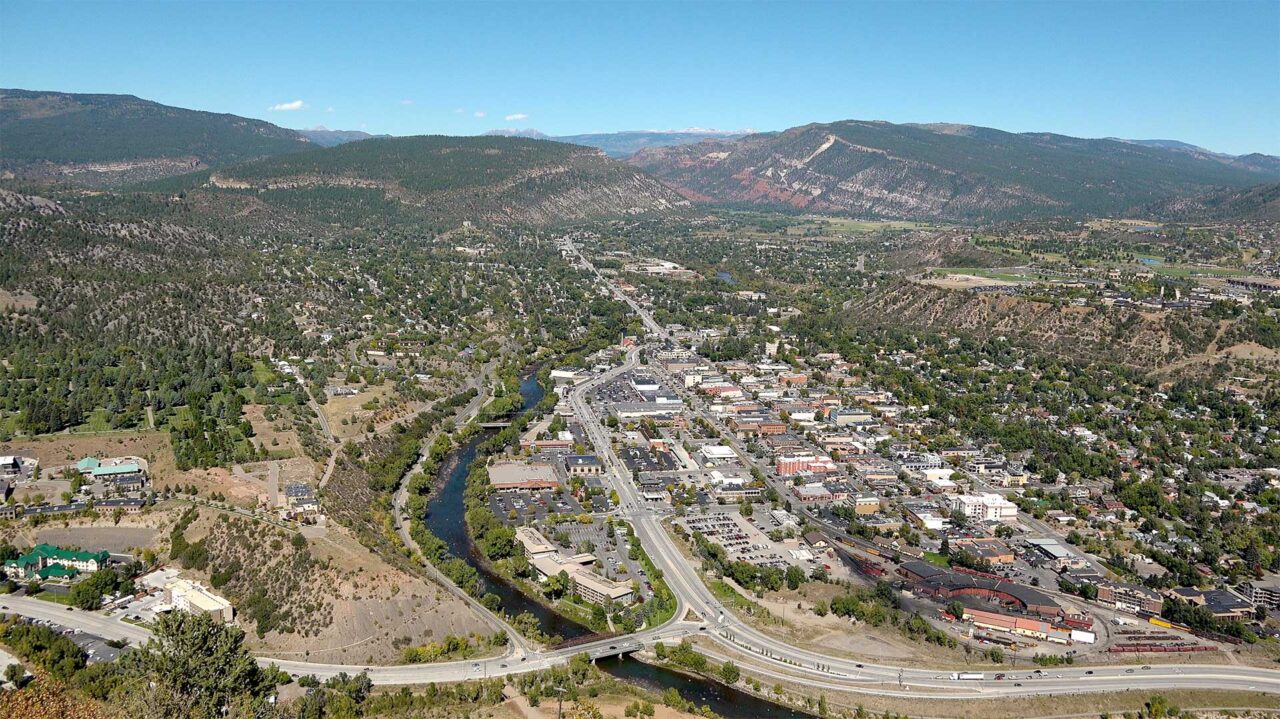
With higher temperatures come increased evaporation, more frequent heavy rainfall events, a higher proportion of precipitation falling as rain, earlier spring melt and generally drier conditions on the ground. Warmer temperatures and prolonged droughts are also predicted to open-up new habitats for insects such as the forest decimating Bark Beetle. Together, these changes will lead to more frequent wildfires similar to the Lightner Creek fire which blazed for a week in 2017 and prompted evacuations just west of City Limits. In addition to immediate public safety concerns; increased wildfire, drought, and declining up-stream forest health have implications for water quality and availability in Durango.
The City of Durango has a long history of action on sustainability. However, the city’s climate action has focused predominantly on mitigation. In light of regional climate projections, it is clear that the City of Durango must now take action to ensure that core City and eco-system services can be maintained in an uncertain future climate.
Given Durango’s dependence on regional resources such as the Animas River Basin and San Juan National Forest, a truly meaningful Community-wide Adaptation Plan will require broad regional support and collaboration. This funding and technical assistance from NLC will enable the City of Durango to convene a series of local and regional engagement events during 2018. Facilitated workshops will bring public and private local, regional and national stakeholders together to build a shared understanding of resilience, identify potential vulnerabilities and chart a course to collaborative adaptation.
Durham, NC
The city of Durham is one of three major hubs in North Carolina’s growing Triangle Region — an area whose need for infrastructure, natural resources and public services is increasing due to significant past and projected population growth. As such, the city must ensure that its existing and future populations can be resilient to more frequent and intense storms, flooding events and hotter temperatures. The experience of two extended power outages that resulted from tropical storm damage have energized city efforts to increase resilience, beginning with municipally-owned buildings and critical infrastructure. In a time of crisis these facilities can serve as emergency response shelters for residents while also providing power for emergency management efforts.
The city will partner with the SolSmart program to conduct a feasibility study to determine the costs and benefits of deploying solar and storage on city facilities and critical infrastructure.
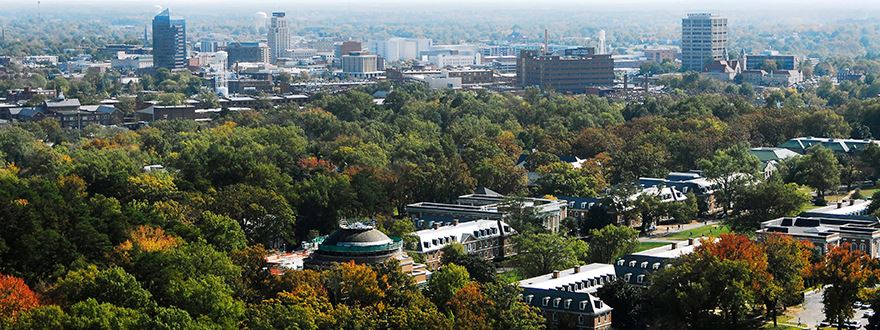
Expanding Durham’s solar capacity generates multiple benefits by providing electrical power in the event of short and long-term outages, minimizing supply chain interruptions, reducing the city’s reliance on fossil fuels, improving air quality and reducing emissions.
By undertaking these efforts, Durham will join other cities and counties in the Triangle Region that are already participating in solar programs. With support from NLC, the city hopes to educate its municipal staff on the co-benefits of solar and storage and critical infrastructure, and engage in a region-wide, peer-to-peer learning workshop where Durham and other solar communities can activate a broader metropolitan movement towards resilience through solar deployment.
Evanston, IL
While insulated from some of the climate threats that coastal cities face, the city of Evanston, Illinois, must contend with many other climate related impacts, including hotter temperatures and drought-like conditions, an influx of invasive species, flooding from increasingly intense storms, and impacts to water quality. The city has taken an active role in preparing for these changes, recently releasing its third iteration of a climate action plan and paying close attention to how these climate impacts may disproportionately affect its lower income residents, communities of color, immigrants and refugee communities, as well as the elderly, youth and disabled residents.
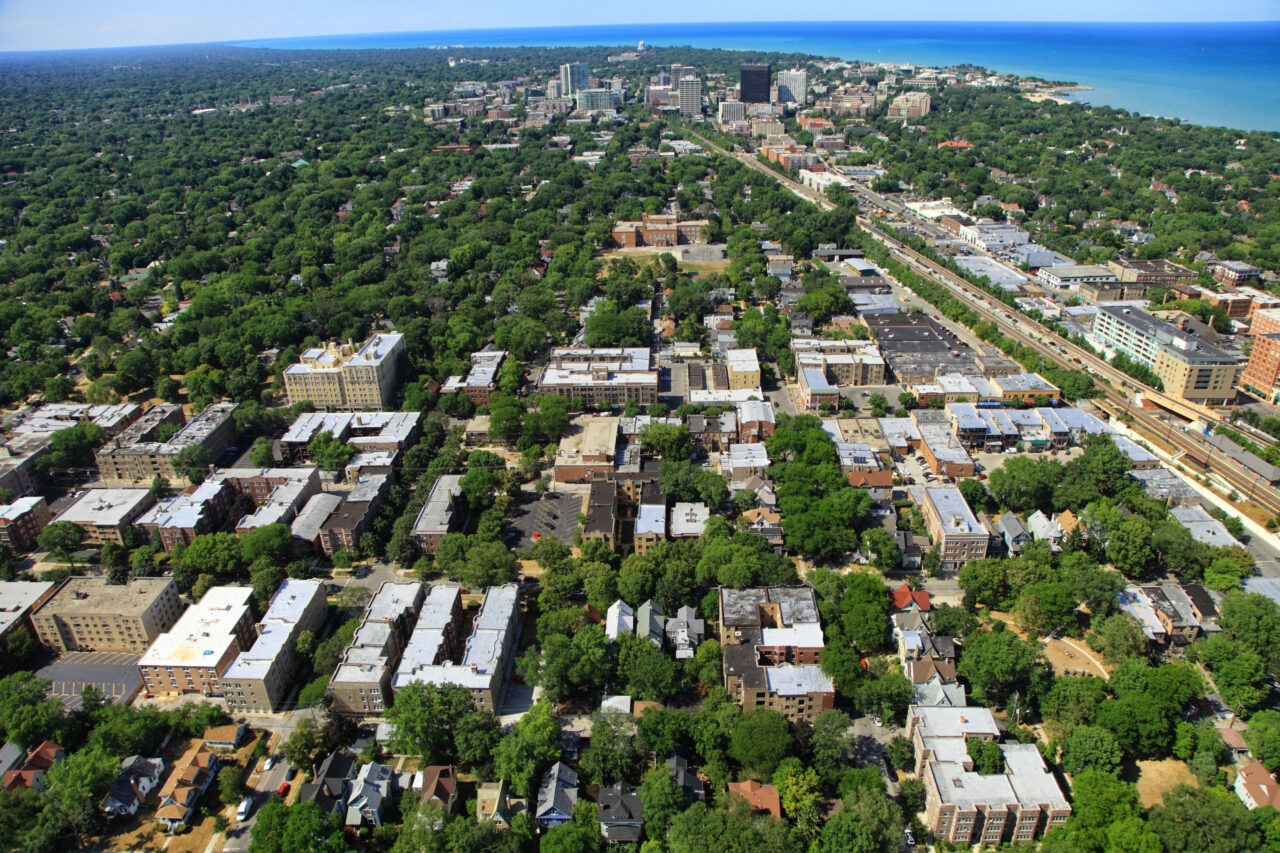
Evanston’s goals are:
- To educate community members from kindergarteners to seniors on what the local impacts of climate change will be; and
- To facilitate community-developed solutions to those hazards and impacts.
To accomplish this, the city has worked with multiple community partners to develop and beta-test a bilingual educational activity called Experience Climate Change. The activity asks several questions of its participants: What do climate impacts look and feel like locally? What decisions does the city need to make, and how can residents contribute to mitigating these local impacts? Participants then discuss what they learned, consider the various actions the city and its residents can take, and complete a survey — a critical element of the process, which helps the city of Evanston understand how residents are engaging with climate hazards and their solutions.
NLC is supporting Evanston in its effort to expand this experiential learning activity to include more communities, partner with museums throughout the region and add content for two additional environmental issues: the connection between air quality and climate change, and zero waste. The goal is to create an activity that can be much more easily and independently set up for multiple events and expanded so that community organizations can run the activity without the aid of city staff. The city of Evanston is eager to engage all members of the community in its climate action plan—particularly those who have been historically underrepresented in planning processes — so that they can make more informed decisions and ultimately, co-create viable solutions with the city.
Indianapolis, IN
In March 2017, Mayor Joe Hogsett signed Resolution 21, committing the City of Indianapolis and Marion County to achieving carbon neutrality by 2050. The same year, the City of Indianapolis was the first in the country to recertify through the STAR Community Rating System, and through this process identified opportunities for improvement in the “Climate and Energy” goal area.
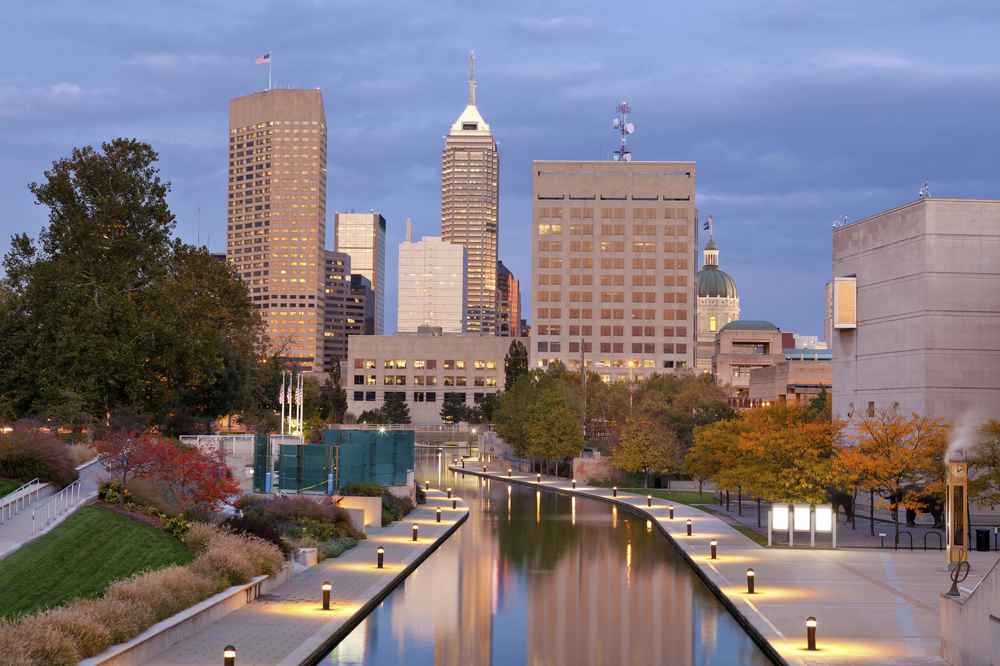
Paired with the ambition to attain carbon neutrality, these opportunities presented a challenge to the city – to improve its collective resilience. Charged with leading this task, the Indianapolis Office of Sustainability’s current priority is the preparation of the city’s first-ever Sustainability and Resilience Action Plan, to include a greenhouse gas (GHG) emissions inventory, a hazard vulnerability assessment, and a solid waste minimization study.
Such a plan, to be completed by January 2019 at the direction of Mayor Hogsett, will identify both short- and long-term municipal and community mitigation and adaptation actions to minimize impacts associated with a changing climate.
As a part of an effort to improve the quality and equity of public engagement, the City will host an installment of the People’s Planning Academy. Launched in the Fall of 2017, the People’s Planning Academy is an exciting new program that combines education and hands-on engagement activities to train Indianapolis residents to be Planning Ambassadors. Planning Ambassadors have both the opportunity to engage more deeply on City plans and the support to take on their own projects. This installment of the People’s Planning Academy will be a collaboration between the Department of Metropolitan Development, the Office of Sustainability, and non-profit community partners. Workshops will tie directly to the Sustainability and Resilience Action Plan. Through the People’s Planning Academy, the city aims to provide all residents, but especially those who have been historically underrepresented in city processes, with the skills and knowledge to be community leaders.
Jackson, MS
Jackson is known for its rich history, strong Black culture, and the proud, triumphant spirit of its residents. The city is situated in a subtropical climate zone with a long season of high temperatures and humidity, extending from early May to late September. Currently, Jackson experiences 47 days of dangerous heat waves, where the heat index rises to above 95 degrees, but by 2030, that number will reach at least 58.

Extreme heat events disproportionately impact under-resourced and communities of color, often affecting resident health and even children’s quality of education. As such, the city is taking a holistic approach to developing a heat preparedness plan focused on addressing local vulnerabilities, enhancing emergency management plans, and building community resilience to extreme heat exposure in Jackson.
With support from NLC, NOAA/CAPA Strategies, and other grant programs, the Jackson team will use existing data on resident vulnerability coupled with new data on heat hot spots to generate maps and resources to inform equitable investments and decisions. These investments may include the construction of new splash pads, parks, and community agriculture projects. The team will also conduct a resident survey and hold focus groups to better understand and document perceptions of heat-related threats, knowledge of effective cooling behaviors, and availability of social support networks. Data from this survey will help the city and its nonprofit partners develop an effective, emergency response plan to better meet the needs of frontline residents and increase awareness around the risks of extreme heat.
Jersey City, NJ
In Jersey City, several risk factors including the city’s low elevation, high flood risk, dense population, limited green space, large number of impervious surfaces and aging storm and waste water infrastructure make the city highly vulnerable to storms and coastal flooding.
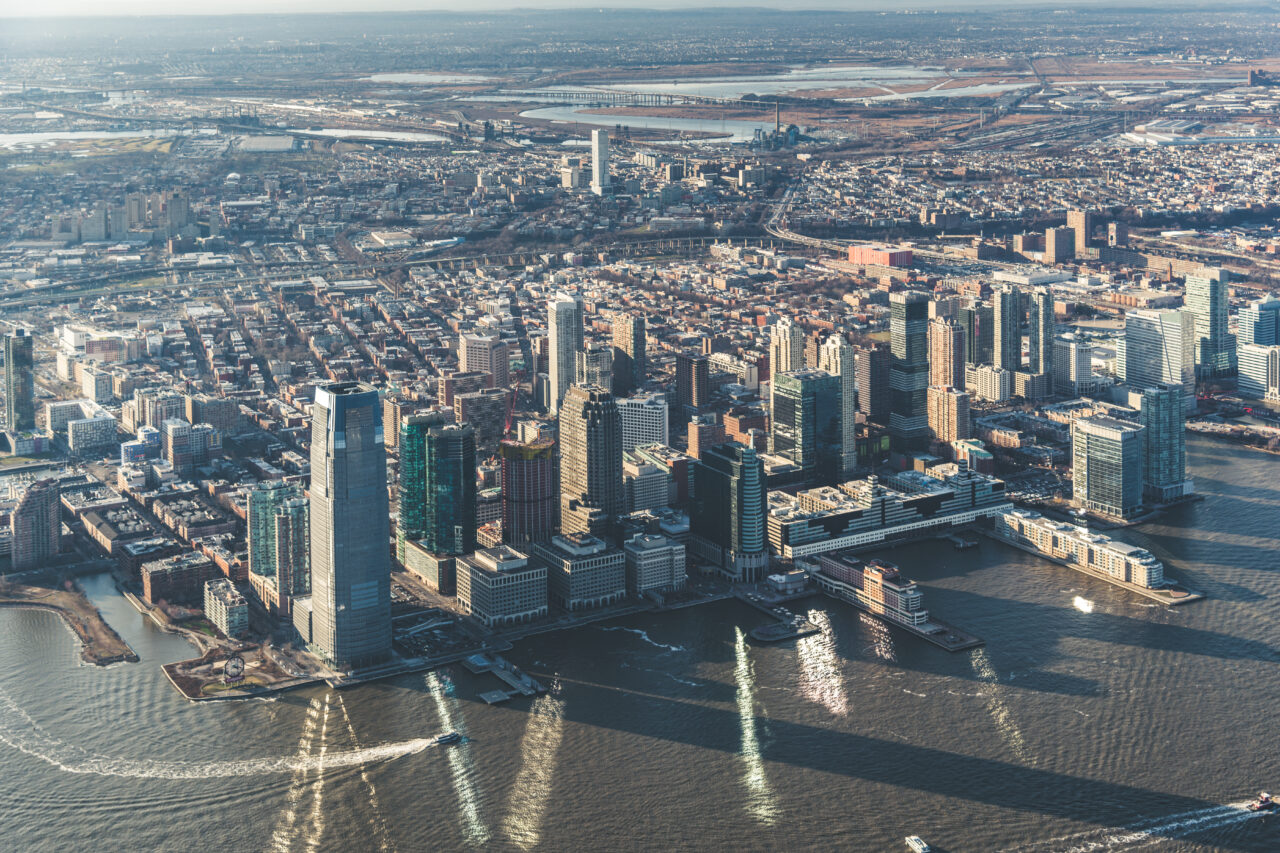
In the years since Hurricane Sandy made landfall on the east coast in 2012, Jersey City’s Department of Health and Human Services and Office of Emergency Management have made significant improvements to their disaster preparedness strategies. In partnership with the Jersey City Housing Authority (JCHA), they recently piloted a Public Resiliency Education Program (PREP) to improve the emergency planning and preparedness plans of its public housing residents.
Many JCHA sites are particularly prone to flood risk due to their geographic location in the city, and residents in public housing generally have limited means to evacuate or seek shelter in the event of a storm. The PREP pilot proved to be successful, reaching many of the city’s most vulnerable residents and empowering them with the tools to create their own disaster preparations and plans.
Through the Leadership in Community Resilience program, the city is now embarking on plans to expand this resiliency planning dialogue and PREP beyond JCHA residents to include more households and neighborhoods, and to incorporate feedback from participants and organizations back into the program. This cross-departmental effort will work with local block associations and community groups to distribute surveys and other materials at neighborhood meetings, spread the word about emergency preparedness, and engage residents through a “5 Steps to Neighborhood Preparedness” guide.
The city of Jersey City is planning to hold eight community workshops and planning sessions over the course of the year and, simultaneously, is aiming to solicit feedback from a variety of community-based organizations and businesses to independently evaluate the city’s emergency and preparedness plans. In a region with an increasing likelihood of storms and coastal flooding, Jersey City strives to help residents feel safe and prepared to withstand the dangers of these events, and ensure the city can take a more coordinated approach to resilience-building and emergency preparedness.
Kingston, NY
The City of Kingston has 5 miles of tidal waterfront in an area of cultural, recreational, residential and commercial development. The riverfront community is facing climate risks on a greater scale than its small population and capacity-limited government can easily address.
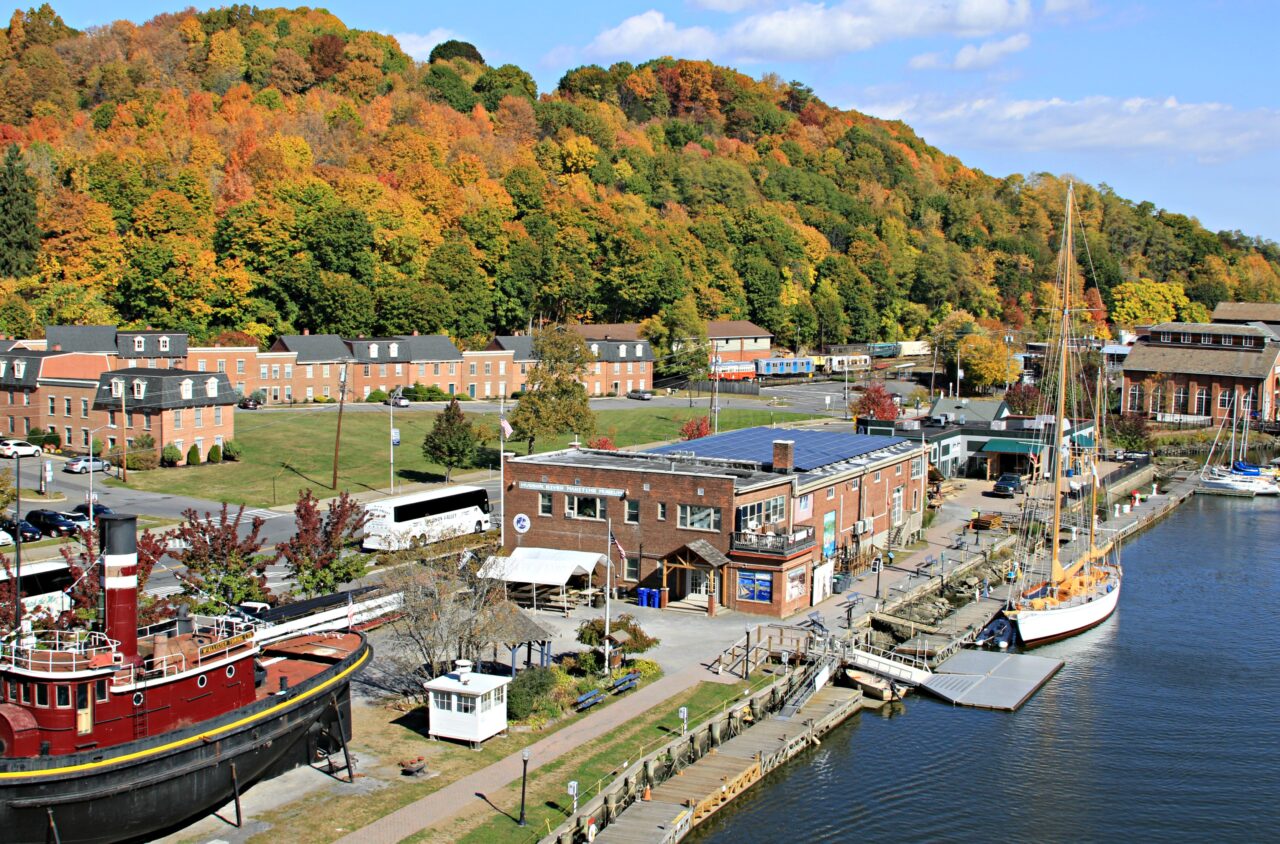
With 12 inches of sea level rise, Kingston has over 100 acres at risk of increased coastal flooding; by 36 inches those acres will be permanently inundated. Much of the area at risk of inundation is within or near a low to moderate income neighborhood, as well as the city’s waste water treatment plant, city beach, trolley line and museum, numerous restaurants, and many more assets. However, much of the waterfront is also vacant. The challenge is how to maintain the connection to the water and the waterfront character of the downtown area while building resiliency both in existing infrastructure and future planning.
In order to address waterfront resiliency — both for flooding, storm surge and sea level rise — the city has worked with students from Cornell University, in collaboration with the NYS Department of Environmental Conservation’s Hudson River Estuary Program, to host the “Climate Adaptive Design Studio”, a student research effort using design to inspire climate adaptation.
With their participation in the SCI program, Kingston staff and institutional stakeholders are poised to move those designs beyond the concept phase and into implementation and construction. The city wants to continue public engagement to expand the number and diversity of stakeholders and educate those most at risk, but ultimately success will depend on advancement of resilient economic development along the Waterfront.
Louisville, KY
Louisville, Kentucky is facing a crucial tipping point in its ability to minimize climate change impacts. A 2012 study from the Climate Lab at Georgia Tech found that Louisville was the fastest-growing urban heat island in the United States. More recently, the Geos Institute discovered that Louisville’s average temperature is on a path to increasing by up to 12°F by 2080 if the city continues business-as-usual. Louisville Mayor Greg Fischer officially declared that Louisville is facing a Climate Emergency at the youth-led Louisville Climate Strike in September of 2019.

In response, Louisville Metro Council recently adopted a 100% Clean Energy Resolution to achieve 100% clean, renewable energy community-wide by 2040. Louisville Metro Government released a Greenhouse Gas Emissions Reduction Plan in March as well as the city’s first draft climate adaptation plan, Prepare Louisville.
With support from NLC, the Office of Advanced Planning & Sustainability aims to expand on this effort by engaging Louisville Metro civic leadership and other key partners in critical strategic discussions focused on the reality of the climate crisis. The discussions will target the anticipated climate change impacts to Louisville, what it means to achieve 100% renewable energy for Metro Government and community-wide, and the most effective ways the city can take action to address climate change.
LCR program partner, Climate Access will facilitate these discussions with the goal of enhancing collaboration among regional leaders and generating a focused, impactful plan of action. Invitees will include Mayor Fischer, Louisville Metro Council, Louisville Metro Government department leaders, the Jefferson County League of Cities, and Louisville Gas & Electric. The aim is to ensure Louisville leadership has an in-depth understanding of how climate change may affect the region and what steps leaders and communities can take to combat it most effectively.
Missoula, MT
By all measures, Missoula, Montana embodies the idea of “Big Sky Country”. Open space, wildlife, agriculture, and recreation opportunities abound. As a result, amenity-rich Missoula has become a rapidly growing urban community, cultural hub, and Montana’s second largest city. Although the quality of life remains high, the city is increasingly vulnerable to the impacts of climate change such as hotter, drier, and smokier summers. These vulnerabilities have far-reaching impacts on public health, our economy, social equity, and our natural environment. Additionally, unaffordable housing prices are pushing many residents into older, substandard, and energy inefficient homes with year-round high utility bills due to drafts in the winter and often hot and pollution-filled smokey air entering these homes in the summer.

To prepare for these impacts, the City of Missoula, Missoula County, and their nonprofit partner, Climate Smart Missoula recently collaborated to produce a climate resiliency plan: Climate Ready Missoula which complements numerous ongoing greenhouse gas reduction efforts. Missoula’s Building(s) for the Future Initiative stems directly from past work and sits at the intersection of the city’s mitigation and resiliency goals.
With support from NLC, Missoula will convene its many stakeholders to chart a roadmap towards healthier and more resilient buildings that consider their full life cycle, from design to deconstruction. The team will conduct key stakeholder interviews and virtual focus groups to prioritize and recommend key strategies for the city to adopt and implement, and provide guidance and tools for non-governmental and other external stakeholders. When permissible, Missoula plans to host an in-person summit to leverage cross-sector discussions—likely in the form of smaller gathering.
Nashua, NH
In the City of Nashua, the residents, community, and government share a vision of managing and mitigating risks with the goal to build a more resilient City, focusing on a number of challenges. Nashua has a significant risk of riverine flooding with the most devastating effects of flooding seen during the 1936 and 1938 flood events causing parts of the city to flood nearly 17 feet. Nashua also experiences urban flooding regularly due to overwhelmed stormwater infrastructure and high levels of impervious cover.
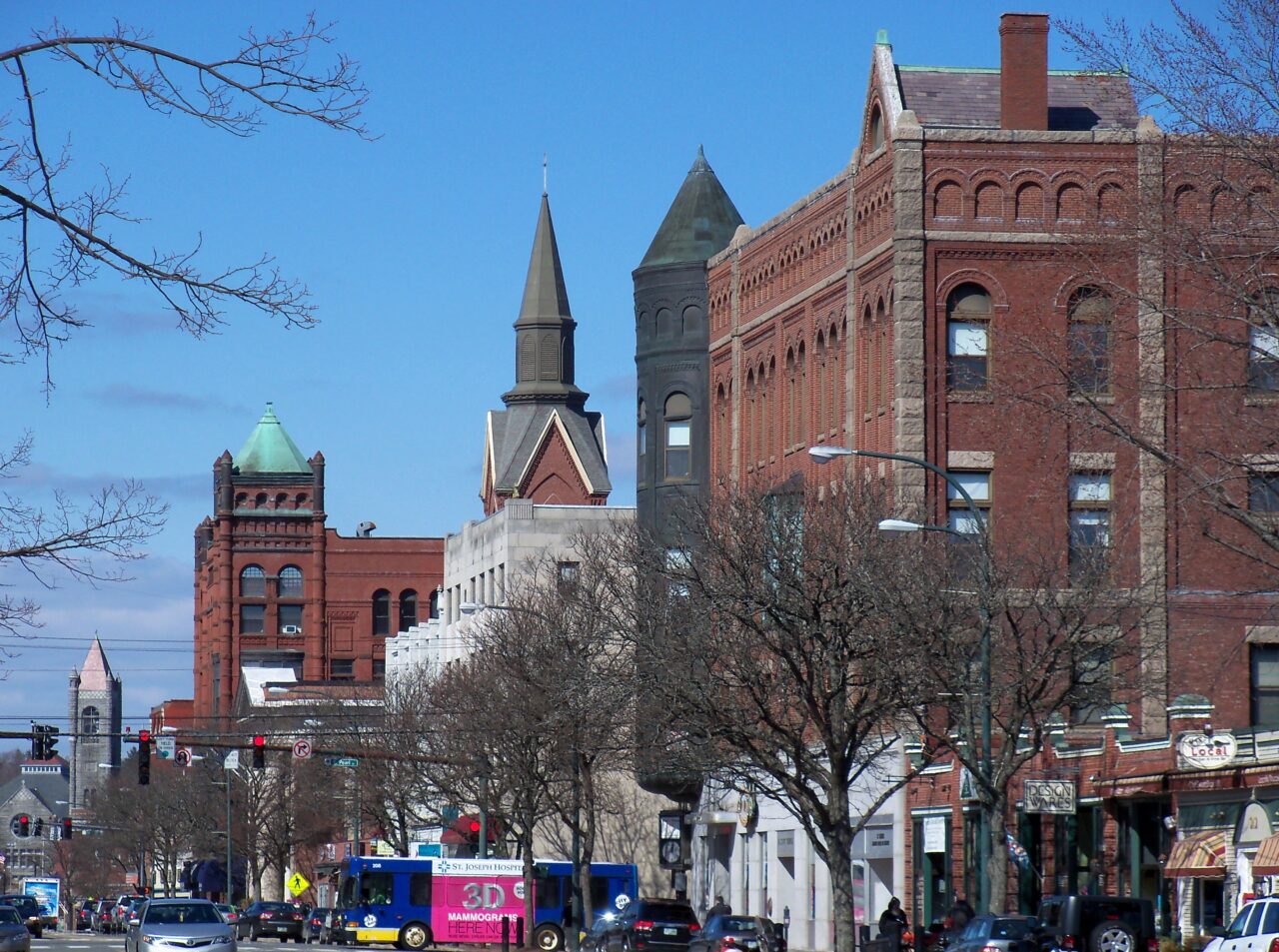
Mayor Donchess has committed to build community resilience and environmental sustainability into the City’s operations by signing on to Mayors National Climate Action Agenda and developing the City’s first Environment & Energy Committee. Relevant city initiatives include a municipal energy-use reduction plan, Downtown Riverfront Development Plan, Climate and Health Adaptation Plan, and Hazard Mitigation Plan. Nashua also hired its first Community Resilience Coordinator in 2017 to lead development of its first Resilience Plan.
The City has increasingly added more resilience and adaptation initiatives to its portfolio each year but more must be done to coordinate these efforts internally with economic and social priorities while connecting with Regional and State resources.
With assistance and grant support from the Sustainable Cities Institute, the Mayor and City leadership propose to partner with state agencies, regional planning organizations, academia, and neighboring communities to host a Resilience Integration Workshop with three goals:
- Catalogue plans and initiatives to identify inconsistencies and conflicts using DHS Coastal Resilience Center’s Plan Integration for Resilience Scorecard process.
- Prioritize resilience and climate adaptation actions that emphasize use of green infrastructure, resilient building design, climate adaptation, and disaster mitigation strategies to prevent adverse effects on diverse populations.
- Identify community partnerships that should be quickly established to gain further representation and engagement from the City.
Becoming a more resilient city will require the city to act more strategically and to seize upon capital improvement projects that can deliver multiple benefits. This capacity building effort develops a path forward for municipal divisions to collaborate with stakeholders, identify and address needed services, and unify community support networks.
Park City, Utah
While Park City’s year-round population hovers around 8,000, the resort town accommodates up to 3 million tourists each year and maintains infrastructure for a population closer to 80,000. It hosts many annual high-profile events, and with so many eyes on the city, its leaders and residents are eager to set an example for other communities.
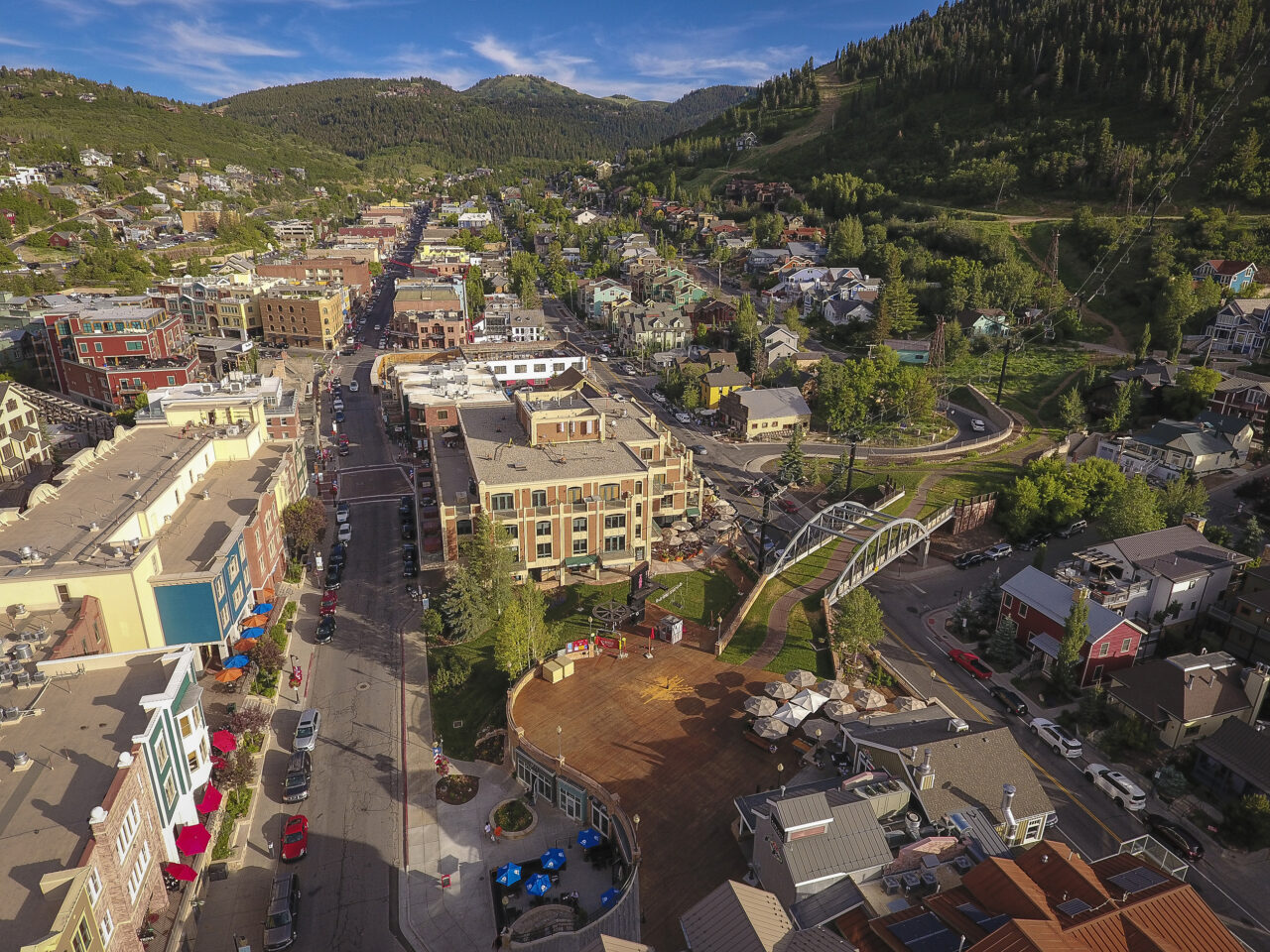
Park City has North America’s most ambitious climate goals: achieve net-zero carbon emissions and 100 percent renewable electricity for city operations by 2022, and for the whole community by 2032. In order to activate the broader community and optimize participation, the city enacted a My Sustainable Year campaign that includes events and information sessions throughout the year.
Nestled in the Rocky Mountains, Park City faces increasing temperatures, wildfires and smoke hazards in the warmer months. The city is exploring innovative ways to manage the many thousands of acres of surrounding forests which are increasingly stressed, filled with dying trees and releasing methane into the atmosphere. Through the My Sustainable Year campaign, Park City is working to both lessen these impacts on local residents, and achieve carbon sequestration goals by collecting dead and decomposing materials from forested areas and private property, and turning them into a carbon rich soil amendment known as biochar. When applied to forest lands and gardens, biochar improves water and soil quality and can be used as fertilizer.
Modeled on a program developed by neighboring Summit County, Park City plans to pilot a series of community events and workshops to educate and engage the community on the use of biochar as a forest management and carbon sequestration tool. The city has already engaged a range of partners to move this project forward, including a cross-departmental group comprised of Park City Emergency Management, the Forestry Advisory Board, Fire District, and Forest Manager, as well as the Lone Peak Hotshots (an inter-agency crew of state and federal wildfire experts), the city’s two ski resorts and other businesses and land conservancies. With NLC’s support, Park City hopes their pilot project can become a salable model for other western cities facing similar climate risks.
Portland, ME
Portland residents and business owners experience the impacts of rising sea-levels and more frequent, intense floods as a result to heavy rainfall on the city’s aging stormwater systems. Nowhere is the threat of climate change on property and infrastructure more visible than in the Bayside neighborhood, the lowest elevation in the city.
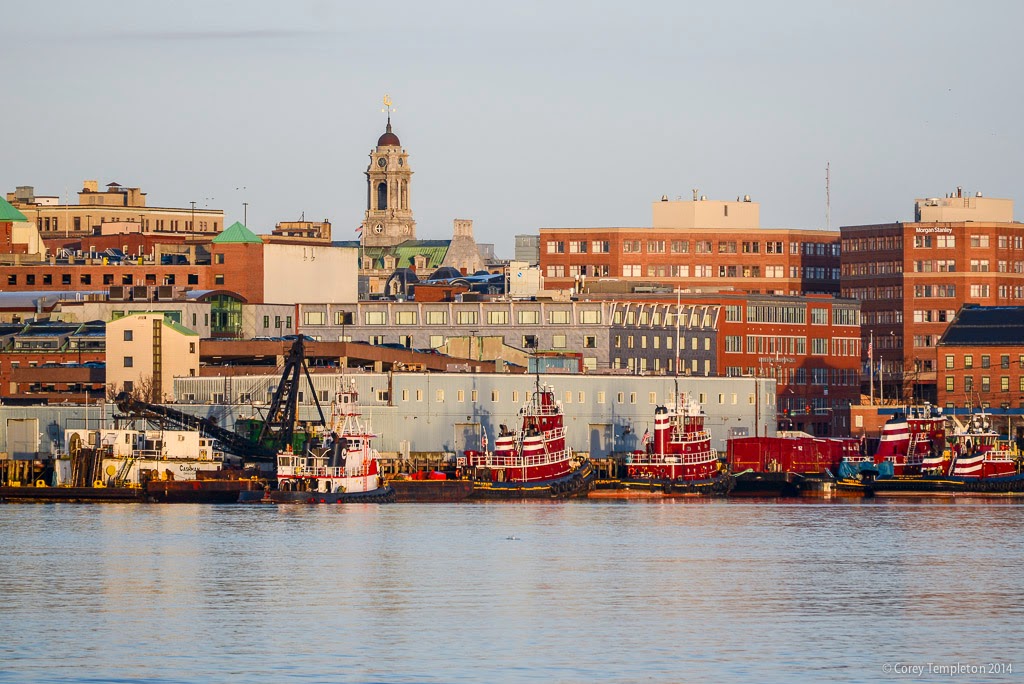
The Leadership in Community Resilience grant was utilized to support the Bayside Adapts Design Challenge, organized in collaboration between the city’s Sustainability Office, Economic Development Department, and Department of Public Works. The design challenge brought together city leadership, residents, businesses, and the design community in Portland to have the first public-facing and engaging open house on resilient planning and climate adaptation practices.
Situated between a permeable berm, Bayside faces flooding from rising sea levels as well as inland stormwater runoff. Although relatively few residents and businesses are currently located in the neighborhood, it is seen as a prime area for expansion as development begins to emanate from downtown. When updates to Portland’s Comprehensive Plan were underway in 2016, the city began to integrate climate adaptation and mitigation strategies into big-vision thinking while forming a new initiative to plan for a more resilient Bayside in the face of climate change.
State of Maine incurs natural hazards such as extreme heat, severe storms and record flooding. Social resilience is limited by the fact that areas most vulnerable to sea-level rise and flooding are rising. According to the National Climate Assessment, sea level increased 1.2 feet over 100 years (1901-2012). “Sea level rise of two feet, without any changes in storms, would more than triple the frequency of dangerous coastal flooding throughout most of the Northeast.”
Providence, RI
The city of Providence leveraged their Leadership in Community Resilience grant to align with and support an existing Partners for Places Equity Pilot Initiative, an intensive nine-month community-building process.

Working with Groundworks Rhode Island and the Rhode Island Environmental Justice League, this resilient and collaborative initiative had one clear goal: to work directly with the environmental justice community to build relationships with low-income populations who are most susceptible to incurring impacts from climate change.
Spearheaded by members of the Racial and Environmental Justice Committee (REJC), a set of 10 Principles and Values for a Racially Equitable and Just Providence were adopted by Mayor Jorge Elorza’s Environmental Sustainability Task Force in September 2017. To learn more about the process and outcome of this initiative, please read NLC’s interview with a member of REJC and the city’s Sustainability Director.
State of Rhode Island natural hazards include severe storms, winter storms and extreme cold, flash floods, coastal flooding, and occasional tropical storms. Rhode Island is a high risk location for future natural disasters and is ranked second in the nation after Florida, according to CoreLogic’s Natural Hazard Risk score. Social hazards include low to median income and concentrated poverty in neighborhoods with greater flood risk. According to the National Climate Assessment, sea level increased 1.2 feet over 100 years (1901-2012). “Sea level rise of two feet, without any changes in storms, would more than triple the frequency of dangerous coastal flooding throughout most of the Northeast.”
Riverside, CA
Food systems, primarily agriculture has a long history in southern California. After decades of population growth and urban sprawl, the city of Riverside is developing a coordinated regional effort to support local farmers and bring forth innovate strategies for residents to have greater access to food systems.
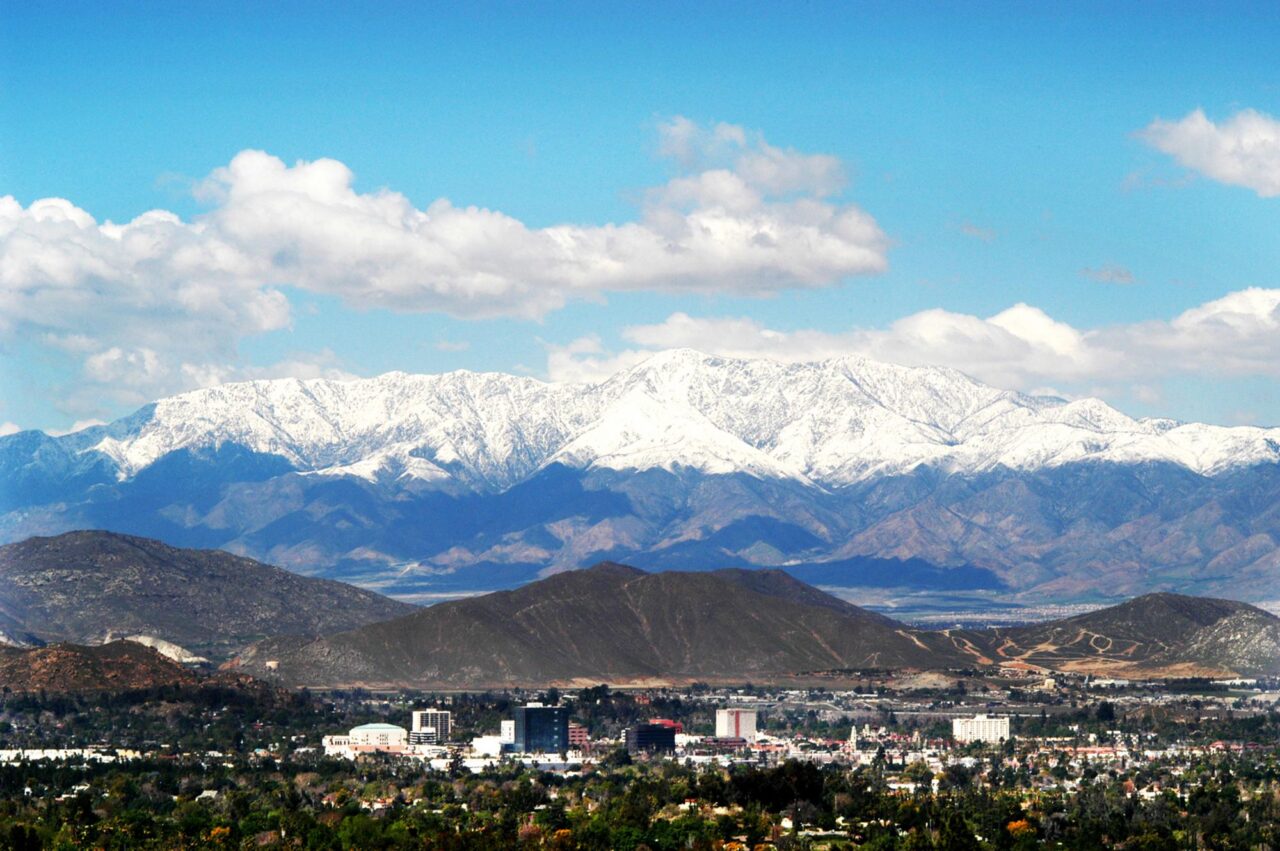
Upon entering the Leadership in Community Resilience (LCR) program, Riverside chose to focus on sustainable agriculture and food resilience as an initiative that was central to their local history and current economic vitality.
State of California natural hazards include drought and wildfires, coastal floods, landslides and mudslides, extreme heat, and wildfires making it ranking highest on a list of locales most at risk of natural disasters. According to the National Climate Assessment, there are significant increases in the number of consecutive frost-free days per year and as a result is projected to lead to further heat stress on plants and increased water demands for crops. Additional changes to the climate “Reduced (high-value specialty crop) yields from increasing temperatures and increasing competition for scarce water supplies will displace jobs in some rural communities.”
To support their efforts, the program applied a resilience lens to local and regional food planning by sponsoring the 4th annual GrowRIVERSIDE conference. The regional convening, hosted by the Riverside Office of Economic Development, provided opportunities for local farmers to meet and exchange best practices and drew public attention to local agricultural issues.
Roeland Park, KS
Roeland Park is a first-ring Kansas City suburb, situated on the Kansas side of the state line. As one of the smaller of the 80 municipalities in the metropolitan region, its residents are highly dependent on neighboring jurisdictions both economically and socially, and the region shares the same ecosystem.
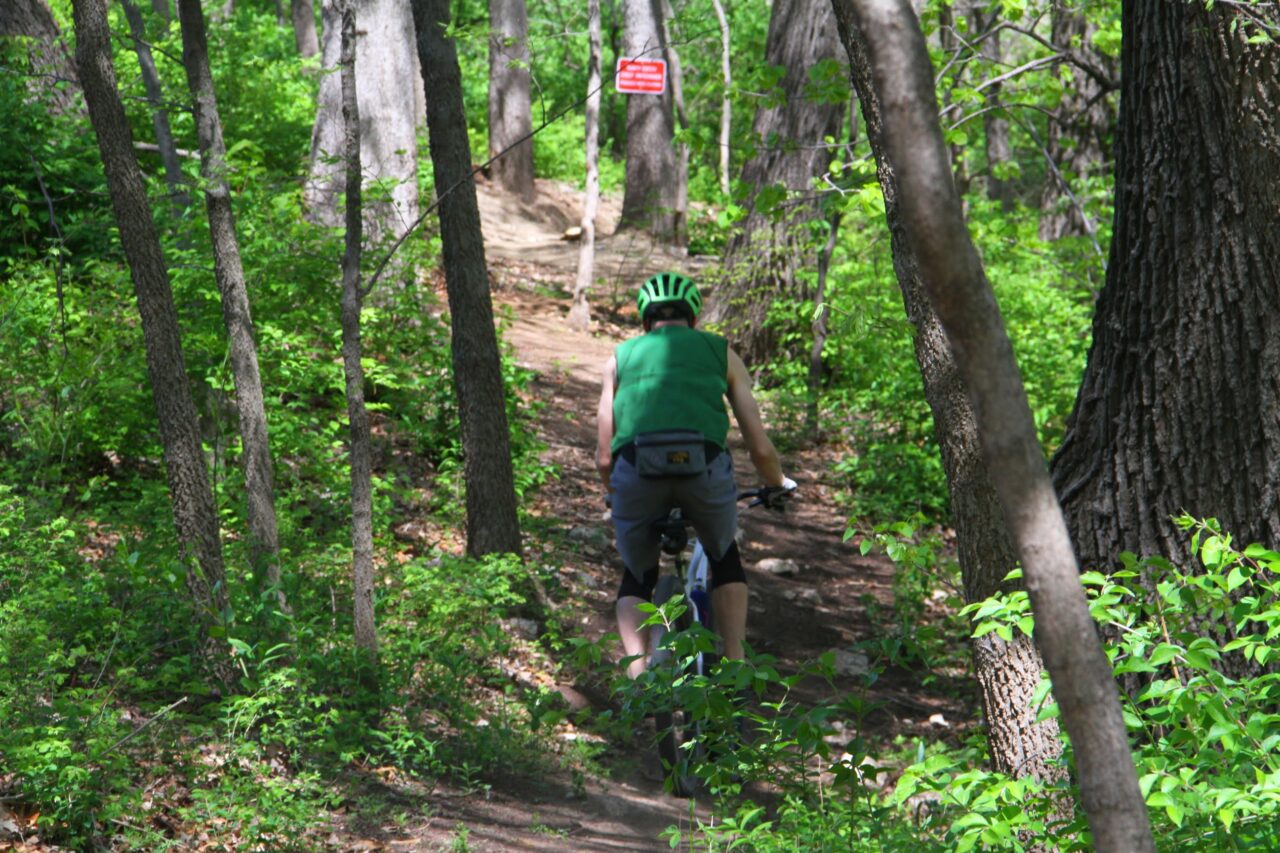
Likewise, climate risks such as drought, increased heat and flooding do not stop at human-made borders and must be addressed by multiple jurisdictions working in coordination at the metro-regional level.
The city recognizes this need for cross-jurisdictional collaboration on climate issues, and Mayor Mike Kelly is chairing an effort to establish a Kansas City Regional Climate Compact. Along with his co-chair, Councilwoman Lindsey Constance of the city of Shawnee, the cross-sector collaborative is comprised of dozens of local jurisdictions, non-profit and for-profit organizations, academic institutions, and local utilities and equity partners.
With NLC’s support, Roeland Park will inaugurate an annual summit for regional practitioners and local elected leaders in September of this year to elevate the importance of metro climate action in the Kansas City area. Modeled after the Southeast Florida Climate Change Compact’s annual leadership summit as well as other regional collaborative efforts, Roeland Park leaders and their partners hope to attract and engage a variety of interested parties and highlight key topics at each convening.
With increased attention, education and practitioner recognition of climate and resilience issues in the metro Kansas City region, the team can begin to leverage this widespread regional support to advocate for resilience issues at the state level, and coordinate and actualize key, long-range, multi-jurisdictional projects that will boost the region’s ability to reduce its greenhouse gas emissions and adapt to the current and imminent impacts that climate change will generate.
Saint Paul, MN
The city of Saint Paul hosted several city and regional plans related to climate adaptation, mitigation, and sustainability. This includes achieving the goals of the Compact of Mayors, finalizing a Resilience Framework, developing a Climate Action and Adaptation plan, and conducting a vulnerability analysis for the regional comprehensive plan.
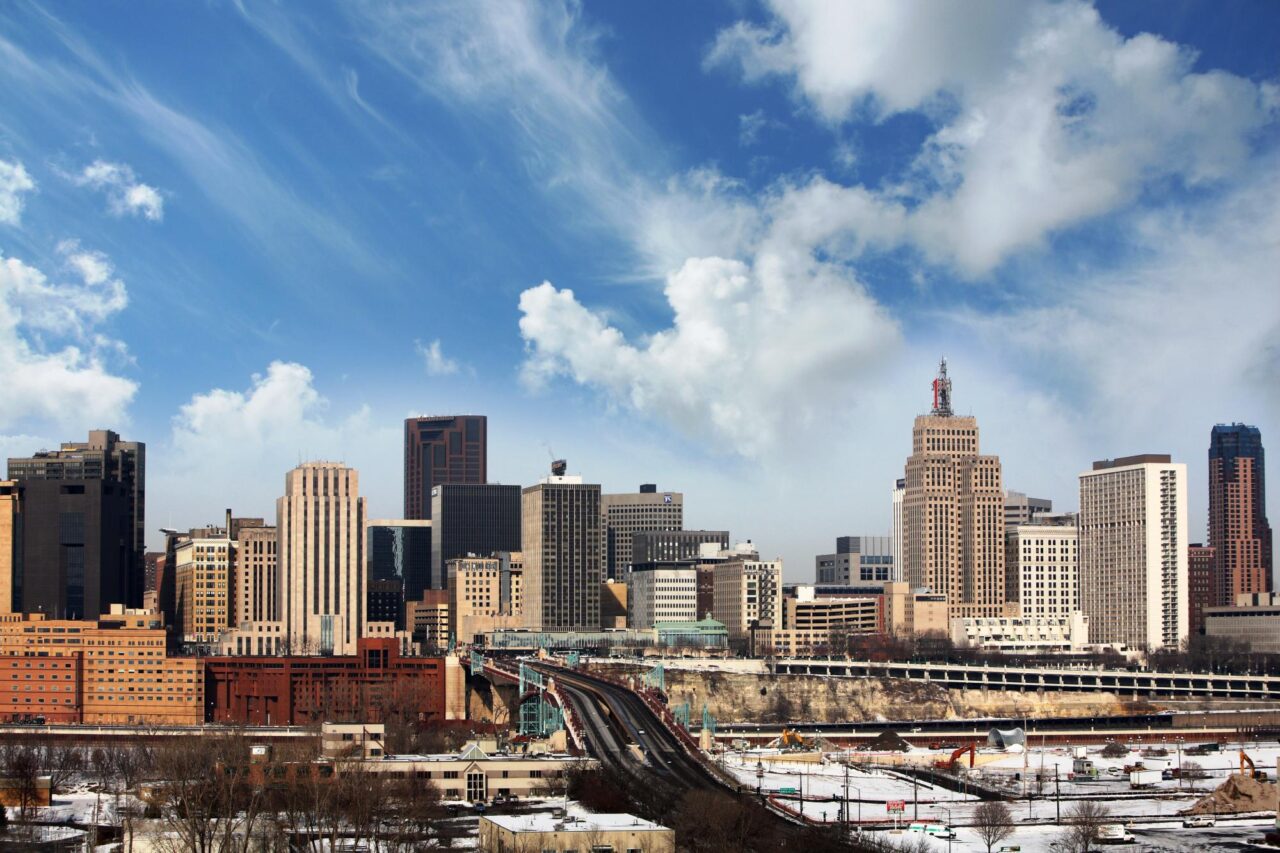
The Leadership in Community Resilience program supported and enhanced these efforts in several ways. First, technical assistance provided a greenhouse gas inventory that is GPC compliant, a need that has been identified by the city. This inventory can be used to inform the updated climate plan and prioritize implementation strategies. Second, the grant funding sponsored the city’s first of three Climate Action Plan Workshop during the first quarter of 2017.
The goal of the workshop is to enhance public participation and engagement on climate adaptation and implementation, particularly with underrepresented communities.
Although the city has resources to conduct their internal planning efforts, their ability to connect this work with the community is more limited. The success of this workshop depends on a targeted outreach strategy will focus on building trust and strengthening relationships with communities in low-income and underrepresented areas that are most susceptible to incurring impacts from climate change.
State of Minnesota natural hazards include tornadoes, floods, blizzards and ice storms as well as possible hail storms, thunderstorms and lightening, and extreme heat. According to the National Climate Assessment, Average regional temperatures have increased by 1.5 F in the past five decades with the largest increases in the Midwest and Northeast. Additional changes to the climate “will tend to amplify existing risks climate poses to people, ecosystems, and infrastructure. Direct effects will include increased heat stress, flooding, drought, and late spring freezes.”
San Antonio, TX
In 2016, the city of San Antonio adopted SA Tomorrow, a coordinated planning effort including an updated Comprehensive Plan, Sustainability Plan, and Multimodal Transportation Plan. The plans are intended to help the city manage growth as it prepares to add 1 million new residents by 2040, nearly doubling the current population. The plans have identified five key areas: transportation, housing, jobs, air and water quality and energy efficiency.
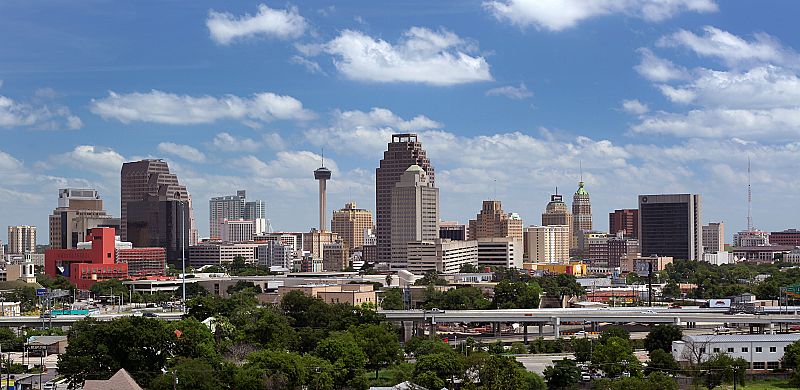
Having adopted the SA Tomorrow Plans, San Antonio staff sought to utilize the Leadership in Community Resilience opportunity to begin an implementation process that would be more inclusive, equitable, and able to engage outside community groups.
In partnership with Adaptation International, a climate adaptation services and community engagement firm known for its work with cities in Texas and elsewhere, NLC hosted a Community Resilience Dialogue to solicit ideas and opportunities that the city could use implement the new plans in ways that are more inclusive, participatory, and essential to building community resilience.
As part of the implementation of the SA Tomorrow Plans, the City of San Antonio is asking for input from the residents, the business community, and other stakeholders as to what a Resilient San Antonio means. This information will be used to evaluate possible strategies and policies to build our community’s resilience and maintain “La Buena Vida” as we live, work, and play in the Alamo City now and in the future. Source: City of San Antonio, Office of Sustainability
State of Texas natural hazards include tornadoes, floods, extreme heat, wildfires and regular coastal hurricane with at least one major disaster declared nearly every year. Texas’ Gulf Coast averages about three tropical storms or hurricanes every four years. According to the National Climate Assessment, the number of days with the hottest temperatures is projected to increase dramatically and by mid-century (2041-2070), the “projected change in number of days exceeding those hottest temperatures is greatest in the western areas and Gulf Coast.”
San Leandro, CA
San Leandro is situated on the San Francisco Bay between Oakland and Hayward with a population of nearly 90,000. Its community is an urban mix of residential and commercial zones ringing an industrial and manufacturing core. On the west, San Leandro will be impacted by the combination of sea level rise, high tides and flooding, disrupting mobility and damaging amenities and critical industry important to San Leandro and the regional economy.
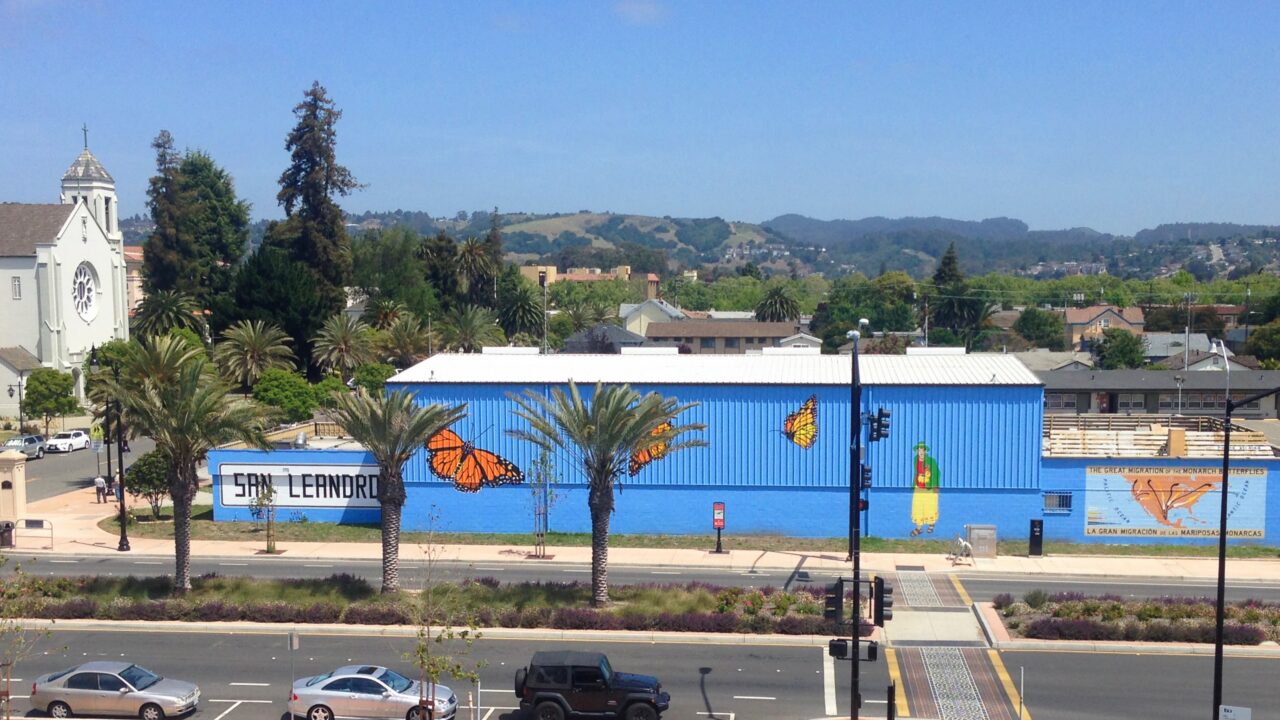
Furthermore, impacted neighborhoods on the west side of San Leandro have struggled with poor air quality and limited access to urban amenities, while also being more vulnerable to flooding and extreme weather events. As a small city, San Leandro will need partners to pursue resilience and adaptation planning and create design projects to respond to these growing threats.
With assistance from the SCI program in 2018, the city will launch Resilient San Leandro with two primary goals.
First, Mayor Pauline Russo Cutter and staff will seek input on potential resilience actions to develop the city’s first Climate Resilience and Adaptation Plan. By starting with the results of the Climate Hazards Assessment, the city hopes to educate and to engage the public around wetlands restoration planning at the shoreline along the San Francisco Bay. Community events will provide an opportunity to recruit volunteers and activists to engage San Leandro’s residents on resilience and adaptation with an aim to promote community leadership and participatory decision making in planning, response and recovery activities.
Simultaneously, the city will focus efforts to restore 4.3 acres of transitional wetlands to tidal marsh near the water treatment plant, the Oakland airport and the regional waste transfer station owned by Waste Management as a demonstration project. With design assistance from the San Francisco Bay Restoration Authority, wetland restoration will enhance the natural resources of the area and provide educational resources to the surrounding communities and utilize nature-based green infrastructure to reduce the community’s water treatment costs over the long term.
Sarasota, FL
Sarasota and the surrounding region have been identified as one of the most climate vulnerable areas in the U.S. Experts estimate that by 2050 the area will experience up to 18 inches of sea level rise and 50 additional days per year over 950.

The city is committed to enhancing its resiliency through a variety of measures, including a detailed climate change adaptation plan and stakeholder engagement for ambitious renewable energy and climate mitigation efforts. Although Sarasota has long been a leader on climate change and infrastructure vulnerability assessments in the region, the city recognizes the critical importance of investing in community-driven resilience planning. Historically, there have been and continue to be significant racial inequities across many social and environmental factors in Sarasota, and there is a need and desire to raise the level of awareness and capacity among city officials on racial inequity and climate change.
With support from NLC, Sarasota will work with a consultant to provide technical training to directors, city management, and elected officials on these intersectional issues. In addition to deep-dive trainings on racial equity and climate change, participants will review local historical policies that have contributed to current inequitable conditions. Staff and elected officials will then review current policies or projects in the implementation phase through a racial equity and resilience lens. This comprehensive training will serve as the first step in a long-term community resiliency planning effort that will track and improve equitable outcomes for residents.
South Bend, IN
The Leadership in Community Resilience project will help South Bend assess the extent to which urban forest and other green infrastructure can be developed to help manage stormwater, urban heat, and improve neighborhood quality. By first updating the city’s outdated tree inventory, we will help staff gain a better understanding of how much has been lost to the ash borer.
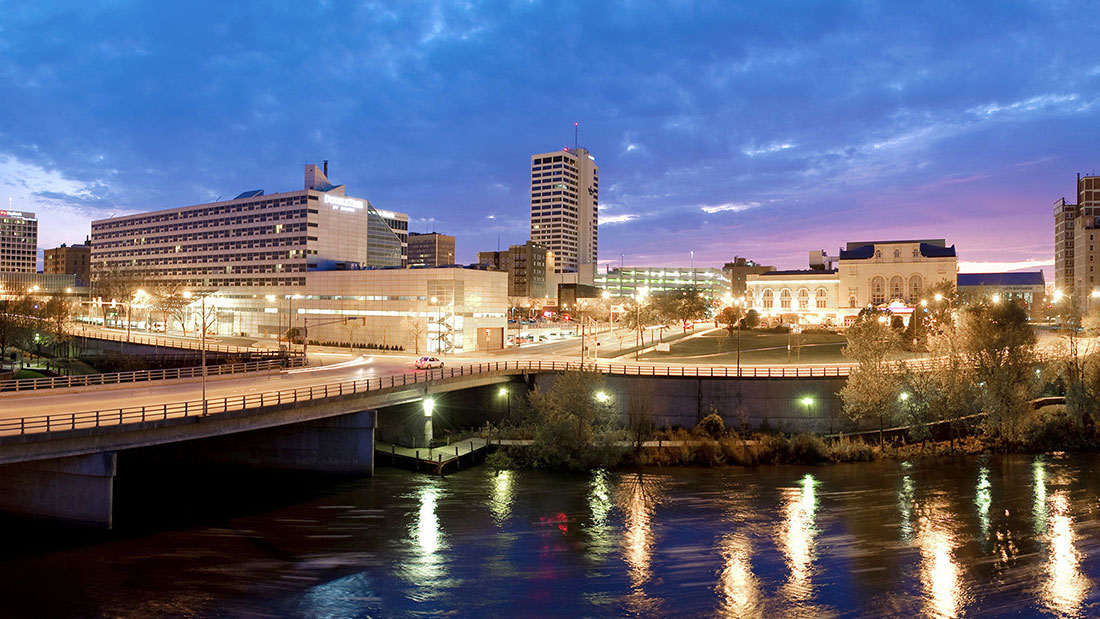
State of Indiana natural hazards include thunderstorms, flash flooding, and ice storms. According to the National Climate Assessment, Average regional temperatures have increased by 1.5 F between 1895-2012. Additional changes to the climate “will tend to amplify existing risks climate poses to people, ecosystems, and infrastructure.
Direct effects will include increased heat stress, flooding, drought, and late spring freezes.” The regional tree canopy has recently been devastated by the emerald ash bore, increasing both heat island and stormwater runoff. Finally, aging and inadequate infrastructure has also caused the city to enter into a consent decree with the EPA regarding their combined sewer overflow.
Tempe, AZ
Tempe’s sustainability and resilience initiatives were typically housed within the Department of Public Works. To broaden the city’s mission and commitment to sustainability, Tempe created a citizens’ Sustainability Commission, and the city manager established a quarterly meeting with City Council. The updates are intended to promote a more deliberate cross-department collaboration and while reviewing and integrating a set of 87 sustainability initiatives identified across all operating departments.
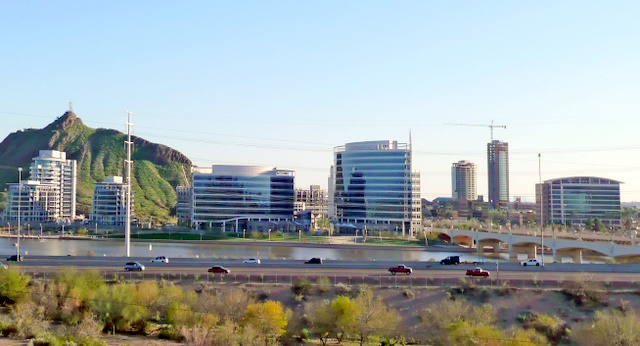
To aid in this effort, the Leadership in Community Resilience program led an internal executive-level Resiliency Workshop in coordination with the city’s first Sustainability Manager. This workshop achieved the following goals:
- Provide the necessary departmental leadership to their operational areas of responsibilities;
- Engage colleague Directors on an ongoing basis to provide a holistic approach as the city continues to develop sustainable best practices and align them with the city managers’ strategic initiative;
- Ensure that the concepts live past the tenure of individuals.
The workshop was hosted in partnership with the ASU Global Institute of Sustainability, and will seek to identify shared initiatives and common performance metrics for city departments to better implement resilience strategies and to foster a productive relationship with the Sustainability Commission. Department leadership throughout the city will be challenged to identify ways that their programs align with the recently adopted strategic performance program initiated by the city manager and adopted by City Council. The city has also joined the Compact of Mayors, committing to benchmark and reduce local greenhouse gas emissions.
State of Arizona natural hazards include tornadoes and flash flooding. According to the National Climate Assessment, there are significant increases in the number of consecutive frost-free days per year and as a result is projected to lead to further heat stress on plants and increased water demands for crops. Additional changes to the climate “Reduced (high-value specialty crop) yields from increasing temperatures and increasing competition for scarce water supplies will displace jobs in some rural communities.”
West Palm Beach, FL
Over the next few decades, sea level is projected to rise by up to 26 inches in and around West Palm Beach and the entire state of Florida faces a number of hazards including flooding, extreme precipitation, hurricanes, thunderstorms and extreme heat. As the regional temperature continues to increase, it will cause increasing stress public health, natural and built environments, energy, agriculture and forestry. In response to these threats, West Palm Beach has set a goal to be the most resilient city in the state for its residents and businesses.
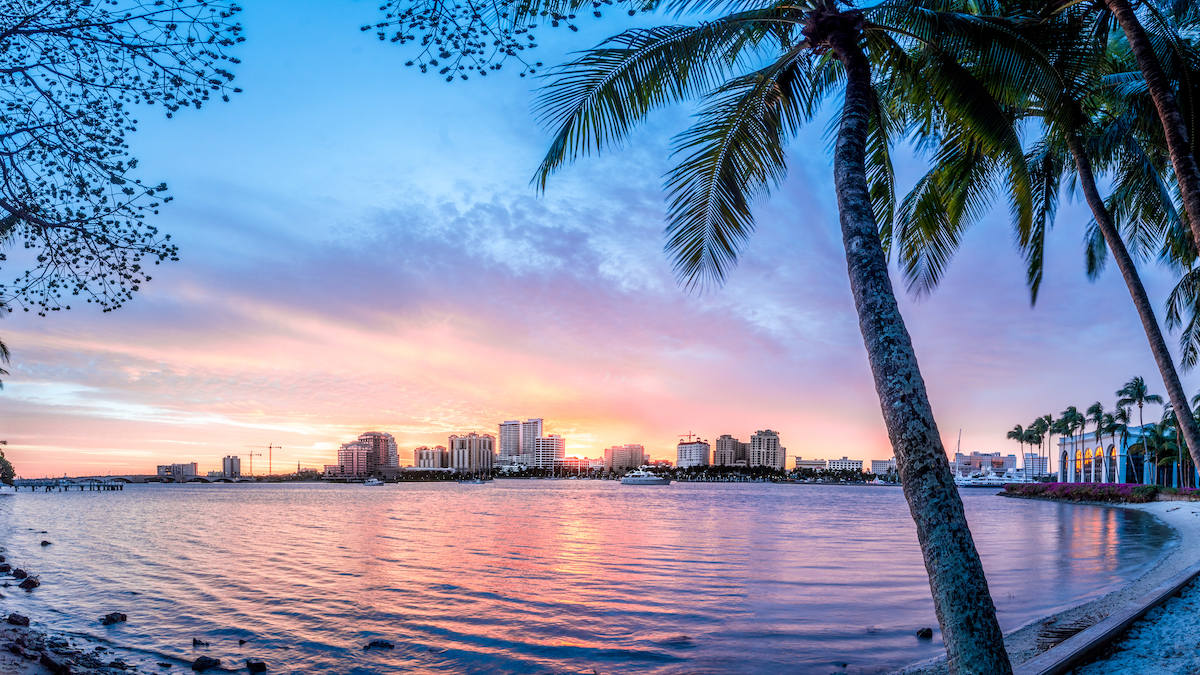
Following Mayor Jerri Muoio’s State of the City address in January 2017, NLC partnered with STAR communities to host a Sustainability Workshop with the city’s community leaders, local business, civic institutions and city advisory board. The workshop evaluated results from the city’s current STAR rating while communicating a strong commitment to become the most resilient city in Florida.
State of Florida hazards include flooding, extreme precipitation, hurricanes, thunderstorms, sea level rise and extreme heat making it second (behind California) on a list of locales most at risk of natural disasters. According to the National Climate Assessment, projected regional average increases are in the range of 4°F to 8°F resulting in extreme heat that “will affect public health, natural and built environments, energy, agriculture, and forestry.”
Southeast Florida Regional Compact Climate Change states, “in the short term, sea level rise is projected to be 6 to 10 inches by 2030 and 14 to 26 inches by 2060 (above the 1992 mean sea level). In the long term, sea level rise is projected to be 31 to 61 inches by 2100. Projected sea level rise, especially by 2060 and beyond, has a significant range of variation as a result of uncertainty in future greenhouse gas emissions and their geophysical effects, the incomplete quantitative understanding of all geophysical processes that might affect the rate of sea level rise in climate models and the limitations of current climate models to predict the future.”
